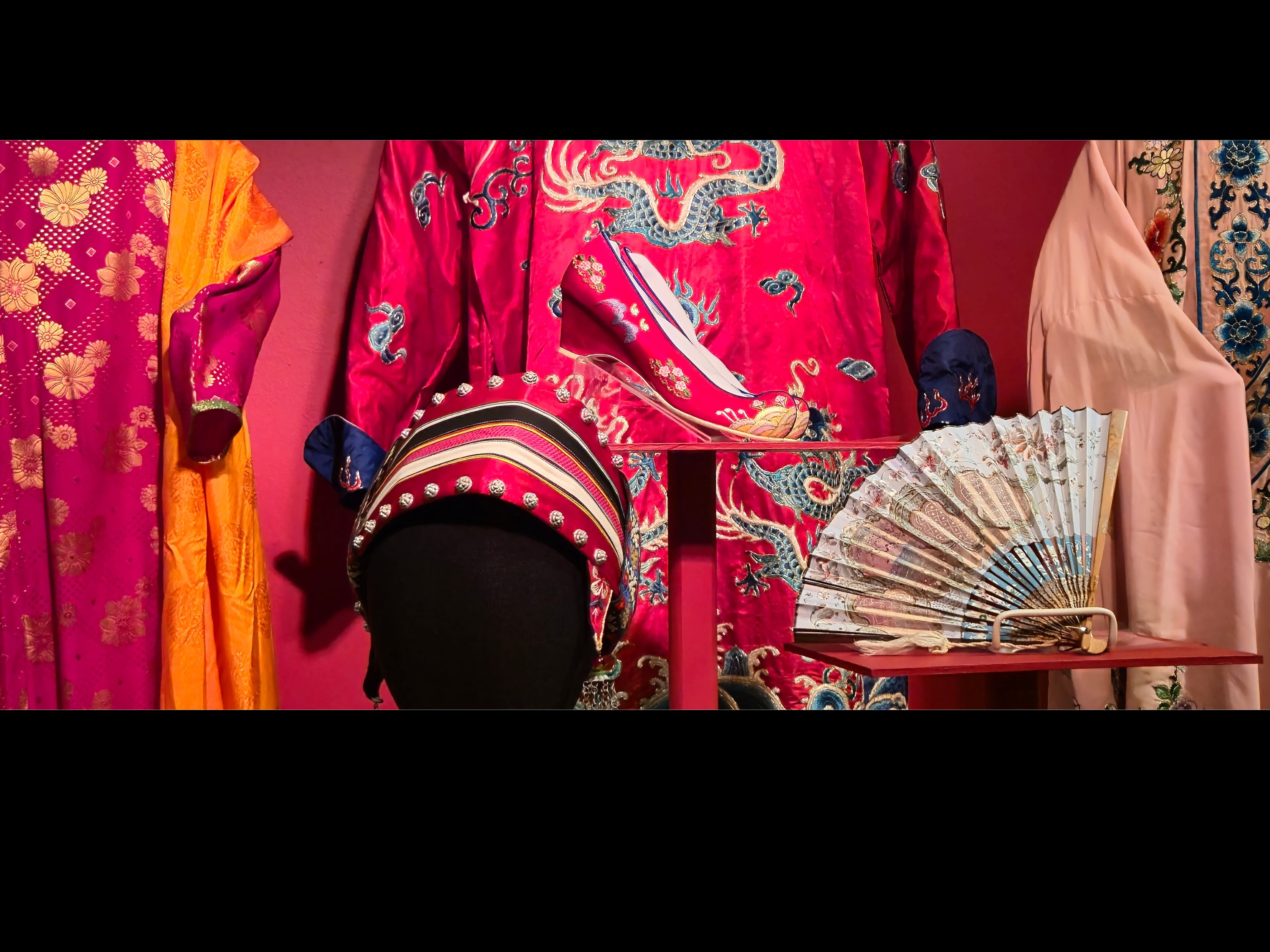Constructing Identity: Themes and Symbols Around the World
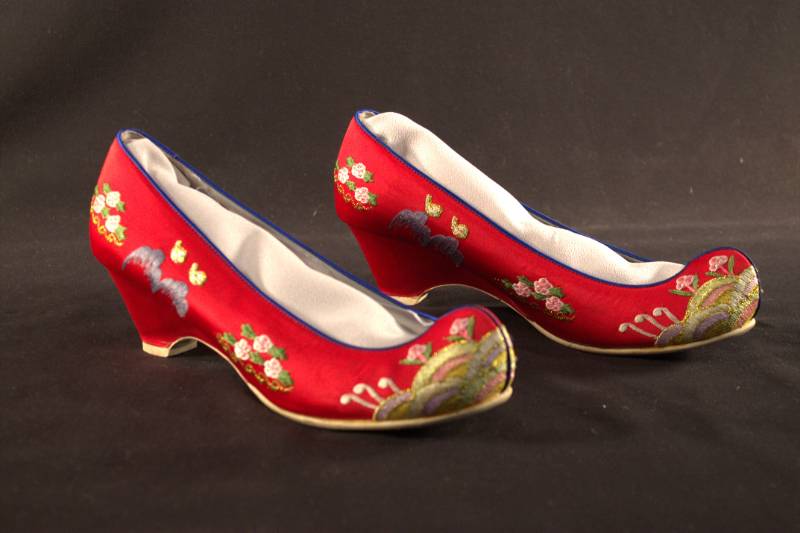
Hanfu (汉服) Shoes
China
Satin
Hanfu shoes are often worn with traditional Hanfu clothing. They can come in a variety of styles and designs. The designs are meant to complement the different outfits.
Donated by Yu Tae-Yong
1997.05.003 a,b Lowell D. Holmes Museum of Anthropology
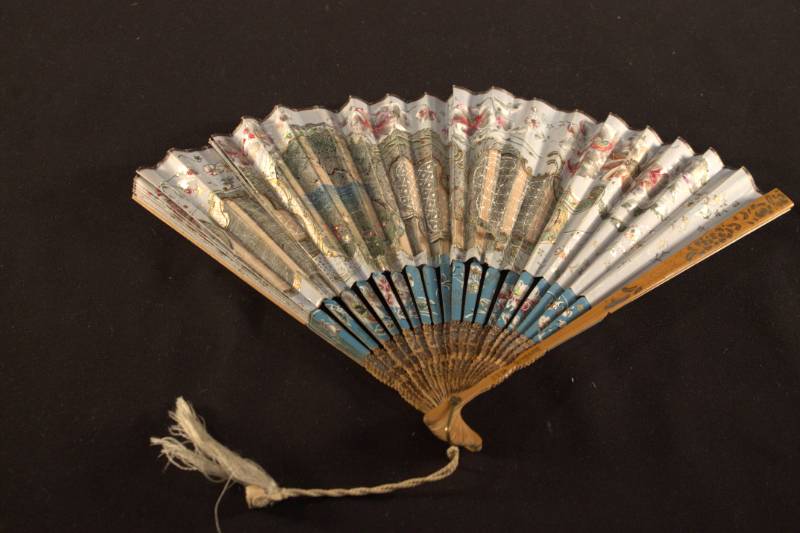
Painted Fan
China
Silk
Silk fans symbolize elegance, status, and artistry. They can be used as a canvas for artists as well as used in weddings to symbolize the gathering of families. Fans can also be used in transitional dances
Donated by Polly Patterson
1997.01.001 Lowell D. Holmes Museum of Anthropology
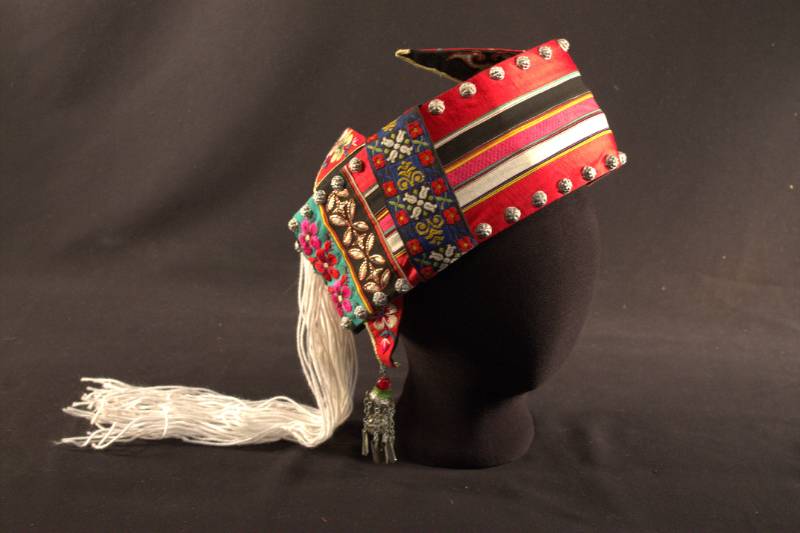
Bai Hat
China
Cotton
The Bai people are a minority group within the Yunnan Province, China. Women traditionally wear these hats as a part of Bai culture. They would accessorize and choose clothing based on what they find beautiful.
Donated by Jerry Martin
1997.14.006b Lowell D. Holmes Museum of Anthropology
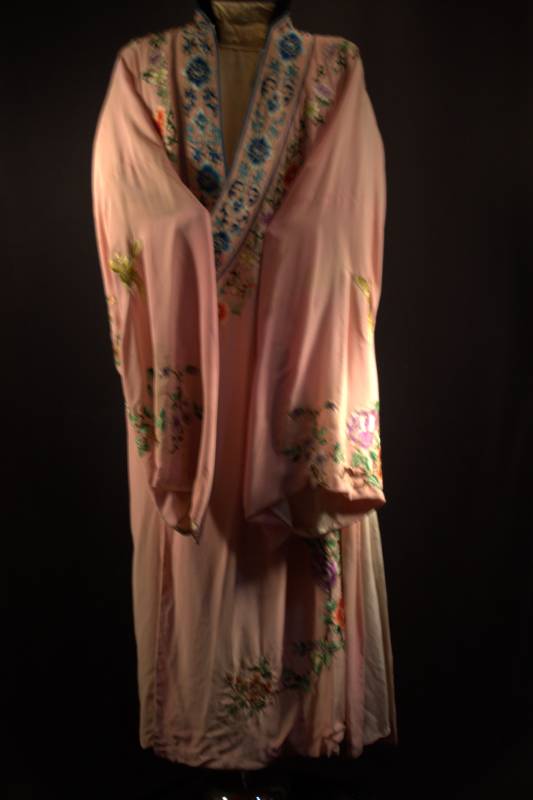
Pink Floral Hanfu (汉服)
China
Silk
Hanfu are a traditional style of Han Chinese clothing. “Han” refers to the Han Dynasty and “fu” means clothing or attire. Hanfu represents the history, traditions and aesthetics of the Han Dynasty. They have recently regained popularity among the younger generations. They see it as a way to reconnect with their cultural roots and express their identity. Different colors of hanfu have different symbolic meanings, typically reflecting on the seasons.
Donated by Jerry Martin
1997.03.001b Lowell D. Holmes Museum of Anthropology
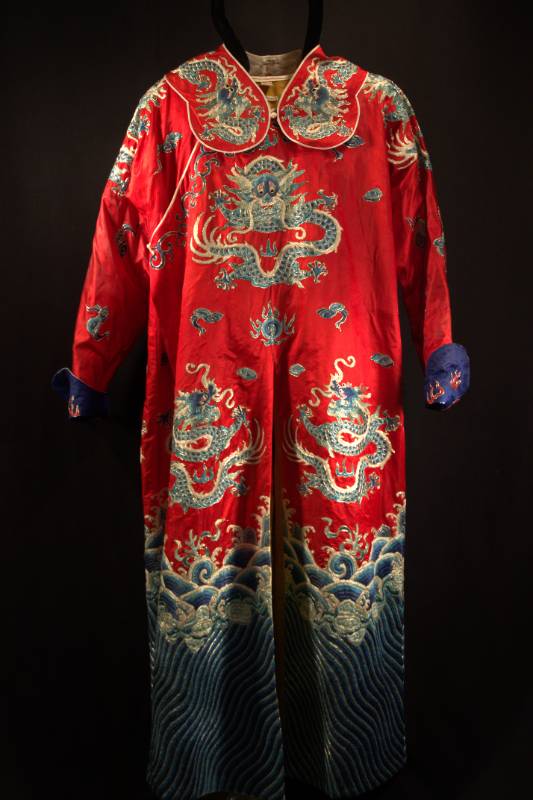
Dragon Hanfu (汉服)
China
Silk
A dragon is the fifth Chinese zodiac sign. 2024 was the Year of the Dragon. A dragon symbolizes power, good luck, and prosperity. Those that are born in the year of the Dragon are intelligent, confident, and naturally lucky and gifted. Dragons are also unique as they are the only mythical animal in the Chinese zodiacs.
Donated by Jerry Martin
1997.03.002 b, c Lowell D. Holmes Museum of Anthropology
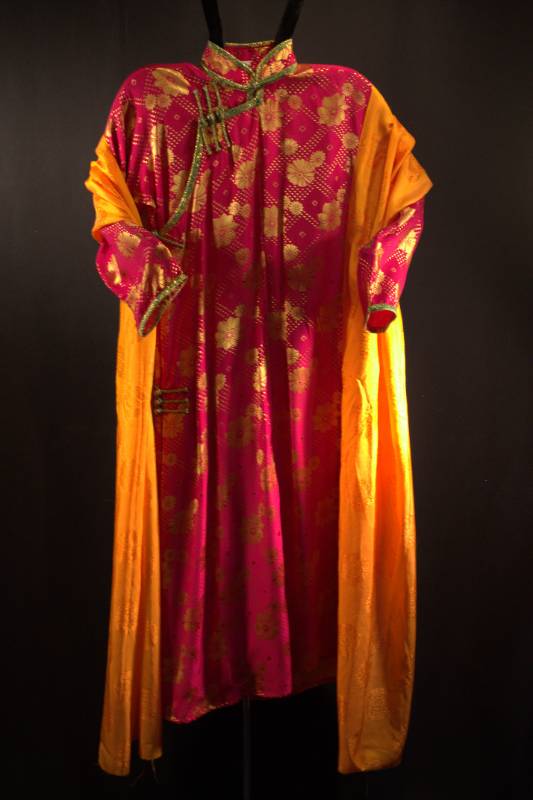
Gold Floral Hanfu (汉服)
China
Silk
Gold and red are popular colors within Chinese culture. Gold symbolizes wealth, good fortune, prosperity and happiness. Red also symbolizes good fortune, prosperity, happiness, and celebration. Both colors are often found together during Chinese New Year.
Donated by Jerry Martin
1990.10.019 a, b Lowell D. Holmes Museum of Anthropology


